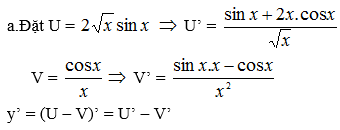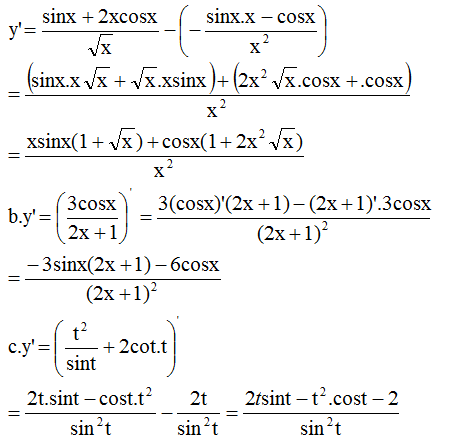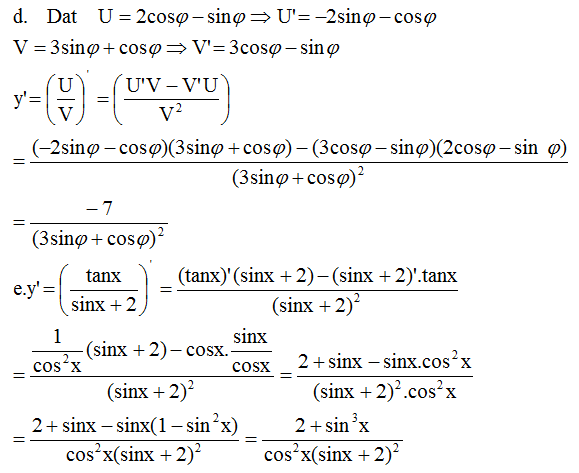Hãy nhập câu hỏi của bạn vào đây, nếu là tài khoản VIP, bạn sẽ được ưu tiên trả lời.

a) TXĐ: \(D=R\backslash\left\{0\right\}\) tự đối xứng.
\(y\left(-x\right)=\dfrac{cos\left(-2x\right)}{-x}=-\dfrac{cos2x}{x}=-y\left(x\right)\).
Vậy \(y\left(x\right)\) là hàm số lẻ.
b) TXĐ: \(D=R\) tự đối xứng.
\(y\left(-x\right)=\left(-x\right)-sin\left(-x\right)=-x+sinx=-y\left(x\right)\).
Vậy \(y\left(x\right)\) là hàm số lẻ.
c) TXĐ: \(D=R\) tự đối xứng.
\(y\left(-x\right)=\sqrt{1-cos\left(-x\right)}=\sqrt{1-cosx}=y\left(x\right)\).
Vậy \(y\left(x\right)\) là hàm số chẵn.
d) TXĐ: \(D=R\) tự đối xứng.
\(y\left(x\right)=1+cos\left(-x\right)sin\left(\dfrac{3\pi}{2}+2x\right)\)
\(=1+cosxsin\left(2\pi-\left(\dfrac{3\pi}{2}+2x\right)\right)\)
\(=1+cosx.sin\left(\dfrac{\pi}{2}-2x\right)\)
\(=1+cosx.\left[-sin\left(\pi+\dfrac{\pi}{2}-2x\right)\right]\)
\(=1-cosx.sin\left(\dfrac{3\pi}{2}-2x\right)\)
Vậy \(y\left(x\right)\) không là hàm số lẻ cũng không là hàm số chẵn.

a) Ta có:
−1≤cosx≤1,∀x∈R⇔0≤1+cosx≤2⇔0≤2(1+cosx)≤4⇔1≤√2(1+cosx+1≤3−1≤cosx≤1,∀x∈R⇔0≤1+cosx≤2⇔0≤2(1+cosx)≤4⇔1≤2(1+cosx+1≤3
Vậy y ≤ 3, ∀ x ∈ R
Dấu “ = “ xảy ra ⇔ cos x = 1 ⇔ x = k2π (k ∈ Z)
Vậy ymax = 3 khi x = k2π
b) Ta có:
Với mọi x ∈ R, ta có:
sin(x−π6)≤1⇔3sin(x−π6)≤3⇔3sin(x−π6)−2≤1⇔y≤1sin(x−π6)≤1⇔3sin(x−π6)≤3⇔3sin(x−π6)−2≤1⇔y≤1
Vậy ymax = 1 khi sin(x−π6)=1⇔x=2π3+k2π,k∈Z





đề bài là: tìm tập xác định ạ